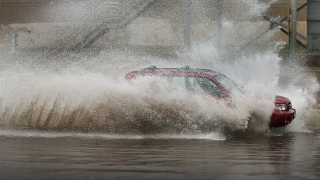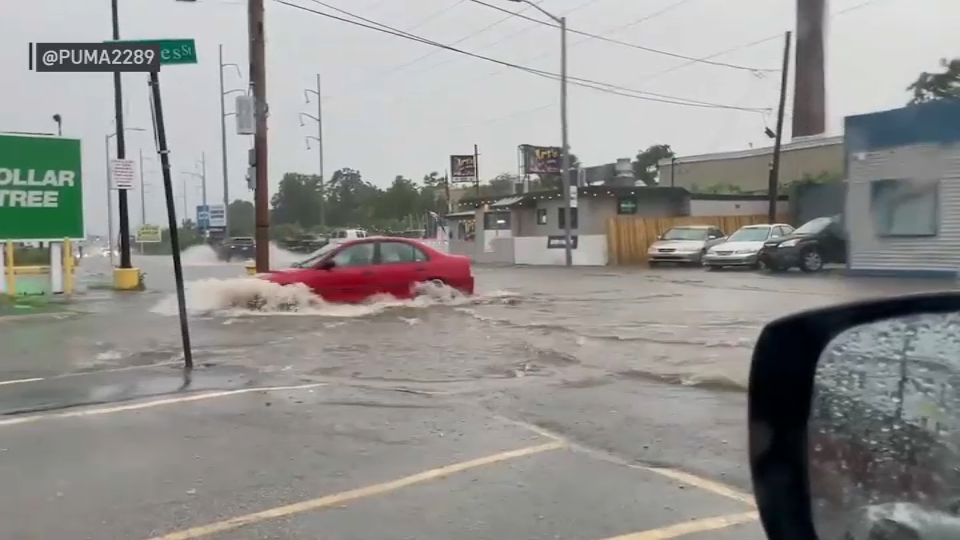
This month's heavy rains follow a year in which coastal communities in the United States experienced record high-tide flooding, a trend that federal ocean researchers say is expected to continue into the future "without improved flood defenses."
The National Oceanic and Atmospheric Administration, in a report released this month, said years of rising sea levels have made high-tide flooding, which the agency also calls nuisance or sunny day flooding, increasingly common, occurring when tides rise 1.75 feet to 2 feet above the daily average high tide.
That means more common occurrences of the kind of flooding that affects shorelines, streets and basements. This type of flooding, which has traditionally been associated with storms, is now occurring during full-moon tides or with a mere change in prevailing winds or currents, the agency said.
"High tide flooding is becoming common and damaging in many parts of the U.S.," William Sweet, an oceanographer for NOAA's National Ocean Service and lead author of the report, said in a statement. "Many coastal communities are saddled with this problem, so NOAA is working to provide them with the kinds of information needed to anticipate, prepare for, and respond to increasingly frequent high tide flooding."
Get Boston local news, weather forecasts, lifestyle and entertainment stories to your inbox. Sign up for NBC Boston’s newsletters.
The report estimated high-tide flooding days in the Boston area at six in 2000 and 11 in 2020. NOAA researchers forecast 11 to 18 high-tide flooding days in the Boston area in 2021, 20-35 in 2030, and 45-95 in 2050.
More common high-tide flooding, especially when combined with heavy rains, puts pressure on sewage and water infrastructure that is already incapable of handling heavy volumes without discharging pollutants into public water bodies, leading to waters that are unsafe for swimming and fueling debate about costly remedies.
The "2021 State of High Tide Flooding and Annual Outlook" also documents changes in high-tide flooding patterns at 97 NOAA tide gauges along the U.S. coast, including spots in Woods Hole and Nantucket; Newport and Providence, R.I.; Bridgeport and New London, Conn.; and Bar Harbor and Portland, Maine. NOAA maintains more than 200 permanent water level stations on the U.S. coasts and Great Lakes.



